 W
WClaude Elwood Albright Roberts was an American opera singer, generally classified as a mezzo-soprano. She grew up in Albuquerque, New Mexico, and was recognized as New Mexico's most famous singer during the early 20th century. She performed with various opera companies during her career, most notably the Carl Rosa Opera Company in the United Kingdom.
 W
WThe All-Star Trio or All Star Trio was a musical ensemble consisting of George Hamilton Green on the xylophone along with Frank Banta or Victor Arden on the piano and F. Wheeler Wadsworth on the saxophone. It was among the most popular musical outfits of the very early Jazz Age. Their music was promoted as "dance music".
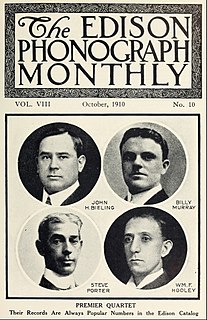 W
WThe American Quartet was a four-member vocal group that recorded for various companies in the United States between 1899 and 1925. The membership varied over the years, but the most famous line-up — comprising John Bieling, Billy Murray, Steve Porter (baritone), and William F. Hooley (bass) — recorded for the Victor Talking Machine Company from 1909 to 1913. The same group of singers also recorded for Edison Records as the Premier Quartet, and for that and other labels as the Premier American Quartet. From 1912 to 1914 the quartet also recorded with countertenor Will Oakland as the Heidelberg Quintet.
 W
WHarry Anthony (1870–1954) was an American tenor and pioneer recording artist. With James F. Harrison he made several recordings of religious music that were popular at the time. He was known as a solo artist, and also became a member of the American Quartet. He made records for most of the major recording companies of the day.
 W
WFrederick J. Bacon was a late 19th to mid 20th century performer and recording artist on the five string banjo. He was also an inventor and entrepreneur, educator, composer, and designer and manufacturer of banjos. At the height of his performance career he played the banjo nationally. Along with Fred Van Eps and Vess Ossman he was part of a group of banjoists labeled "virtuoso" in the newspapers. He founded the F.J Bacon Co., possibly as early as 1902, after having invented a new resonator for open-back banjos. It wasn’t until 1908 that Bacon came up with Bacon Mfg. & Publishing Co. to sell his banjos and music compositions. During the Big Five tour Bacon became Bacon Mfg. Co in 1911 from Forestdale and incorporated Bacon Mfg. Co. in 1912. In 1918 from New London he called himself Bacon Banjo Mfg. Co. around 1918, and formally the Bacon Banjo Co. Inc in 1920 with E.O Winship and wives. In 1922 his company gained business experience in David L. Day, formerly of Vega. Together they produced Bacon and Day banjos, some of which have been considered worthy of display in museums, as showpieces of artistic impulse from the Jazz Age. Frederick and his wife Cassie were proponents of the classic banjo style of playing banjo, in which the strings are plucked with the fingers, without picks.
 W
WJoe Belmont was the stage name of Joseph Walter Fulton who was a whistling performer and baritone in the United States who came to be known as "The Human Bird". He was one of the most popular recording artists in the years leading to 1900 and sang as a baritone and whistled for the Columbia Quartet along with Albert Campbell, Jim Reynard and Joe Majors. His top-selling records included "Beautiful Birds, Sing On", "Tell Me, Pretty Maiden".
 W
WAlfred Aloysous Bernard was an American vaudeville singer, known as "The Boy From Dixie", who was most popular during the 1910s through early 1930s.
 W
WJohn H. Bieling was an American tenor singer who was a pioneer recording artist in the early years of the twentieth century. He featured on thousands of recordings, especially as a member of The Haydn Quartet and The American Quartet, two of the most popular vocal groups of the period.
 W
WRuby Brooks was an American banjoist, composer, and pioneer recording artist, sometimes called "King of Banjoists." He was influential on later banjo players such as Fred Van Eps.
 W
WAlbert Charles Campbell was an American popular music singer who recorded between the late 1890s and the 1920s. He was best known for his many duo recordings with Henry Burr, and as a member of the Peerless Quartet and other vocal groups, but also recorded successfully as a solo singer both under his own name and under various pseudonyms including Frank Howard.
 W
WAmalia Carneri is the artist name of Amalie Malka Pollak, born Malka Kanarvogel,, a soprano opera and operetta performer based in Vienna, Austria. She performed in several of Vienna’s most prestigious concert venues and made several recordings.
 W
WArthur Francis Collins was an American baritone who was one of the most prolific and beloved of pioneer recording artists, regarded in his day as "King of the Ragtime Singers".
 W
WCharles D'Almaine was an American violinist with the New York Metropolitan Opera, a chiropractor, and a pioneer recording artist.
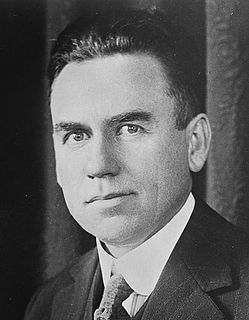 W
WMarion Try Slaughter, better known by his stage name Vernon Dalhart, was an American country music singer and songwriter. His recording of the classic ballad "Wreck of the Old 97" was the first country song to sell one million copies.
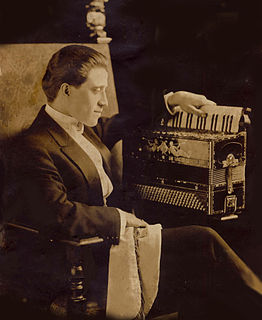 W
WCount Guido Pietro Deiro was a famous vaudeville star, international recording artist, composer and teacher. He was the first piano-accordionist to appear on big-time vaudeville, records, radio and the screen. he usually performed under the stage-name "Deiro". Guido and his younger brother Pietro Deiro were among the highest-paid musicians on the vaudeville circuit, and they both did much to introduce and popularize the piano accordion in the early 20th century.
 W
WWilliam F. Denny was an American vaudeville performer and pioneer recording artist.
 W
WSamuel Holland Rous, who recorded using the name S. H. Dudley, and less frequently as Frank Kernell, was an American singer, pioneer recording artist, and music business executive. He was unrelated to the black vaudeville performer and impresario Sherman Houston Dudley.
 W
WEdward Addison Favor, who was billed as Edward M. Favor or Ed. M. Favor, was an American vaudeville comedian, singer and musical theatre performer who was one of the most popular stars of the late nineteenth and early twentieth centuries.
 W
WWilliam F. Hooley was a British-born American bass singer and pioneer recording artist who was popular as a solo singer, as a monologist, and as a member of several of the most successful vocal groups of the early twentieth century, including The Haydn Quartet and The American Quartet.
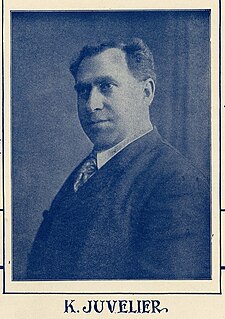 W
WKalman Juvelier was an Austrian-born Yiddish theatre actor and manager, Broder singer, Tenor, and recording artist of the late nineteenth and early twentieth centuries, who was active both in Europe and the United States. After emigrating to the United States in 1900, he became a key figure in the Yiddish theatre in New York, working with such notables as Boris Thomashefsky, David Kessler, Bertha Kalich and Jacob P. Adler and was director of the Hebrew Actor's Union as well as the Jewish Theatrical Alliance. From roughly 1905 to 1918, he recorded roughly 90 Yiddish language discs, mostly Yiddish theatre music, for most of the major record labels in the New York area.
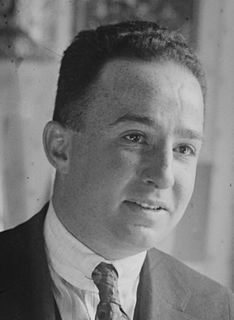 W
WIrving Kaufman was a prolific American early twentieth century singer, recording artist and vaudeville performer.
 W
WBohumir Kryl was a Czech-American financial executive and art collector who is most famous as a cornetist, bandleader, and pioneer recording artist, for both his solo work and as a leader of popular and Bohemian bands. He was one of the major creative figures in the era of American music known as the "Golden Age of the Bands".
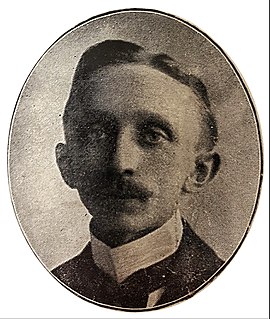 W
WCharles P. Lowe was an American xylophonist who made numerous recordings in the early days of the recording industry.
 W
WJoel Mossberg was a Swedish-American singer, educator and choir director, who was active between the years 1900 and 1940.
 W
WTalbot O'Farrell was an English music hall singer and film actor.
 W
WSylvester Louis "Vess" Ossman was a leading five-string banjoist and popular recording artist of the early 20th century.
 W
WStephen Carl Porter was an American pioneer recording artist, who recorded prolifically for numerous recording companies in the 1890s and early 1900s. He was also an entrepreneur who helped establish the recording industry in India in the early years of the twentieth century, and successfully marketed a new form of hearing aid.
 W
WDaniel William Quinn was one of the first American singers to become popular in the new medium of recorded music. Quinn was a very successful recording artist whose career spanned from 1892 to 1918. Quinn recorded many of his hits in the legendary Tin Pan Alley of New York City.
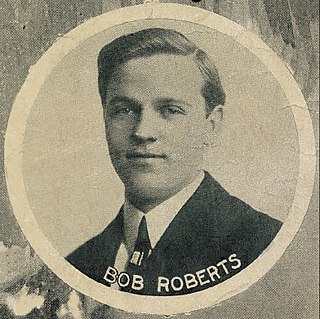 W
WRobert S. Roberts, sometimes referred to as "Ragtime" Bob Roberts, was an American novelty singer and ragtime song composer in the early years of the 20th century.
 W
WJosie Sadler (1871–1927) was for twenty years a leading American stage comedienne known for her "Dutch" (German) dialect routines and heavy-set appearance. She made several early phonograph recordings for the major companies of the time, and also made several silent films, mostly for Vitagraph. She retired from show business to operate her deceased husband's electrical research business.
 W
WSamuel Siegel was an American mandolin virtuoso and composer who played mandolin on 29 records for Victor Records, including 9 pieces of his own composition and two that he arranged. Siegel was the first mandolinist to record on Emile Berliner's phonograph disk-records. He was labeled "America's Greatest Mandoline Virtuoso" and "The King of the Mandolin" in the May 1900 Banjo World.
 W
WMike Speciale was a dance band leader in the 1920s. He made numerous recordings for the Edison and Pathé companies, and appeared regularly on radio from the mid 1920s until at least 1934.
 W
WAileen Stanley, born Maude Elsie Aileen Muggeridge, was one of the most popular American singers of the early 1920s.
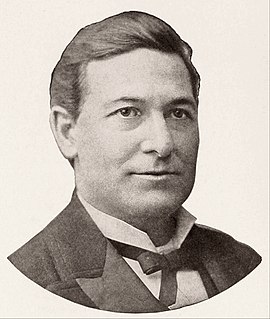 W
WCal Stewart was an American comedian and humorist who pioneered in vaudeville and early sound recordings. He is best remembered for his comic monologues in which he played "Uncle Josh" Weathersby, a resident of a mythical New England farming town called "Pumpkin Center" or "Punkin Center", leading to a number of small towns across the U.S. adopting those names.
 W
WReinald Werrenrath was an American baritone opera singer, who also recorded popular songs and appeared regularly on radio in the early decades of the twentieth century. Werrenrath commonly used the pseudonym Edward Hamilton.
 W
WFlora Edna White, known professionally as Edna White and privately for much of her life as Edna White Chandler, was an American trumpet soloist, chamber musician, vaudeville performer, and composer. A child prodigy, White began her professional career as a soloist in 1901 at the age of eight and graduated from the Institute of Musical Art in 1907. White, who switched from cornet to trumpet during her studies at the Institute, was one of the first soloists to perform on trumpet rather than cornet.
 W
WCarsten Thorvald Woll (1885-1962) was a leading Norwegian-American singer and recording artist of the 1910s and 1920s.
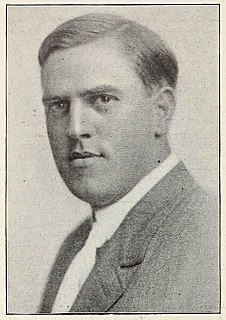 W
WHarry A. Yerkes was a marimba player, inventor, and recording manager who assembled many recording sessions in the early years of jazz. Many of the sessions organized by Yerkes used his name for the artist credit, including Yerkes' Jazarimba Orchestra and Yerkes' Marimbaphone Band on Columbia Records, which are estimated to have some of the best selling records of 1919 and 1921.